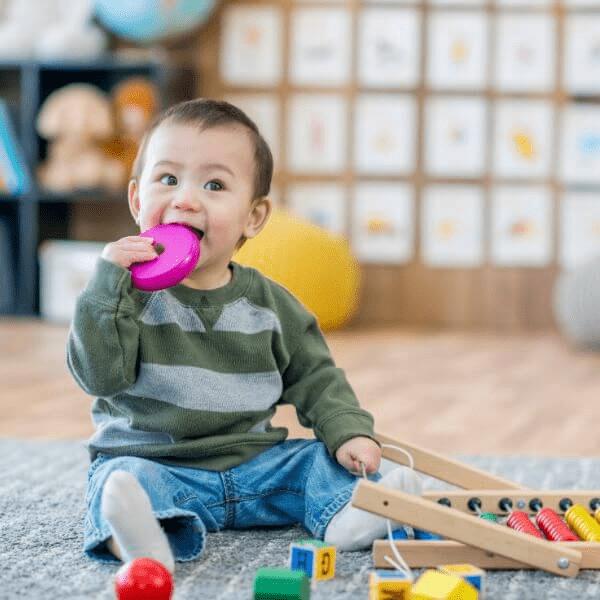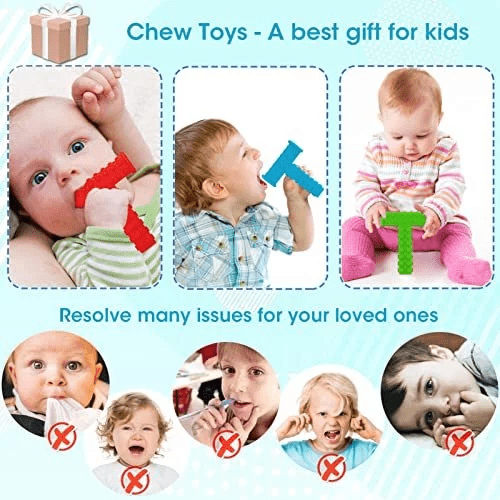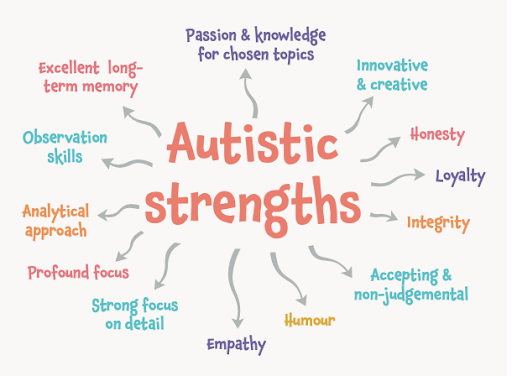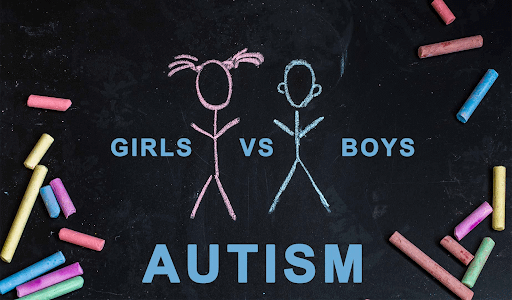
Sarah was seated on the living room couch observing her seven-year-old boy Ethan as he intensely chewed into his most preferred plaything at its corner. This brought sighs to Sarah’s mouth because of the wear and tear her son puts on his toys, let alone damage to his teeth. She knew that Ethan was not only being destructible but rather something more underneath this. As a parent with an autistic child, Sarah had to deal with various problems that could be understood and addressed practically. “What makes my son chew objects so much and what can I do?” she wondered.
Characteristics of the Problem
Chewing objects is common among children suffering from autism. It could involve chewing on toys, clothes, or fingers just any other thing they can get hold of. While this behavior might appear perplexing as well as worrying to parents as well as caregivers alike, it must be understood that it is often a mechanism of coping with sensory processing disorders.
Common Manifestations:
- Toys: Most autistic individuals are prone to chewing their toys, thus causing wear away and damaged playthings.
- Clothes: Typical targets include sleeves, collars, and cuffs; clothing may become spongy and worn out.
Fingers: This leads some children to chew their fingers, exposing them to possible skin damage or higher likelihoods of infections in case of accidents.
Why Do Autistic Children Chew on Objects?
There are several reasons why autistic children may manifest chewing behavior:
- Sensory Seeking Behavior: Many autistic individuals have difficulty processing sensory information hence they seek it by biting objects.
- Oral Fixation: Chewing can serve as an oral fixation that gives one comfort and security sensation.
- Stress / Anxiety Relief: Chewing acts as a self-soothing technique in children lowering stress levels.
- Exploration & Understanding: Little kids suffering from autism may chew objects while exploring the world around them
Practical Solutions with Examples

Dealing with chewing in autistic children means understanding their sensory needs and offering them appropriate alternatives. The following are some practical solutions:
Chewable Jewelry: These are specially made pieces of jewelry that are safe for children to chew on. They come in different textures and designs to cater to various sensory requirements.
Example: Discreet chew necklaces shaped like animals or geometric figures could be worn by the child whenever he feels like chewing.
Chewable Toys: There should be toys that can be chewed safely, but not destructible.
Example: Silicone or rubber chewing toys provide oral stimulation without getting damaged when used instead of other things.
Sensory Chewing Tools: There are different kinds of tools such as chewy tubes and chew sticks that have been designed to meet the needs of autistic children who require chewing objects.
Example: A backpack or belt loop, provided with a chewy tube will make it possible for a child to take it whenever needed.
Occupational Therapy: Seeing an occupational therapist can address underlying issues associated with sensory processing and devise personalized strategies.
Example: Introducing oral motor exercises by an occupational therapist may help reduce object-chewing tendencies.
Activities and Support with Examples
It is important to redirect this type of behavior by engaging in activities while also providing support. Here are some activities and strategies:
- Sensory Activities- Involve the child in activities that give them sensory input through various means.
Use activities that are meant to specifically address oral sensory needs.
For instance, the bubble gum, the whistle blowing or the crunchy apples and carrots can be used to provide such necessary mouth stimulation.
The positive reinforcement strategy involves encouraging and rewarding the child when they use appropriate chewing tools instead of objects not meant for chewing.
As an example, one can devise a reward system where a child earns stickers or little treats for using their chewable toy rather than biting on their shirt.
Provision of Suitable Chewing Items: Make sure that there are always appropriate materials available for the child’s chewing needs.
Just like in different locations e.g., living room, bedroom, and car among others at all times keep chewable jewelry or toys so that they are easily accessible to them.
Detailed Case Study with Example
Case Study: Managing Chewing Behavior in Alex
Alex was an eight years old autistic boy who had a tendency of chewing his shirtsleeves as well as toys. His parents were worried about the effect this might have on his dental health and having to constantly replace shredded clothes. This is what made them decide that it was time to consult an occupational therapist.
The occupational therapist evaluated Alex’s sensory needs and came up with a plan that included:
Chewable Jewelry and Toys: A selection of necklaces as well as toys for him was provided to Alex including a dinosaur-like chew toy which he liked carrying around with him wherever he went.
Oral Sensory Activities: Among other things including blowing bubbles; eating crunchy foods such as potato chips and carrot sticks helped fulfill his oral sensory needs with time intervals over his day.
Positive Reinforcement: Instead of this way, her parents developed a chart where with each use of chewy toys instead of their clothes earned either stars for going above expectations. Alternatively, if you gain enough stars then you will get rewarded by receiving some small toy or special treat.
Sensory Breaks: On the other hand, part of Alex’s day was planned to incorporate regular sensory breaks with participation in tactile activities such as tactile bins.
Within a few weeks, Alex’s chewing behavior significantly improved. He still used his chew toys regularly but had stopped chewing on his clothing and other toys. The structured approach, along with positive reinforcement and occupational therapy, helped Alex manage his chewing behavior successfully.
Conclusion
Chewing objects is a common behavior in children with autism which is often driven by sensory needs or oral fixation or just a means of coping with stress or anxiety. By understanding the underlying reasons behind this action and providing appropriate alternatives and support for it, parents and caregivers can help their children cope more effectively.
Practical solutions like chewable jewelry, sensory activities, and occupational therapy can make a significant difference. Remember that each child is unique hence what works for one may not work for another one. It is important therefore to be patient, observant and also ready to try out different techniques so as to find out what best fits your child’s needs. Henceforth after all these years you can assist your child move through their sensory world effortlessly and safely by using proper methods plus offering comfort whenever required.












No comments yet. Be the first!